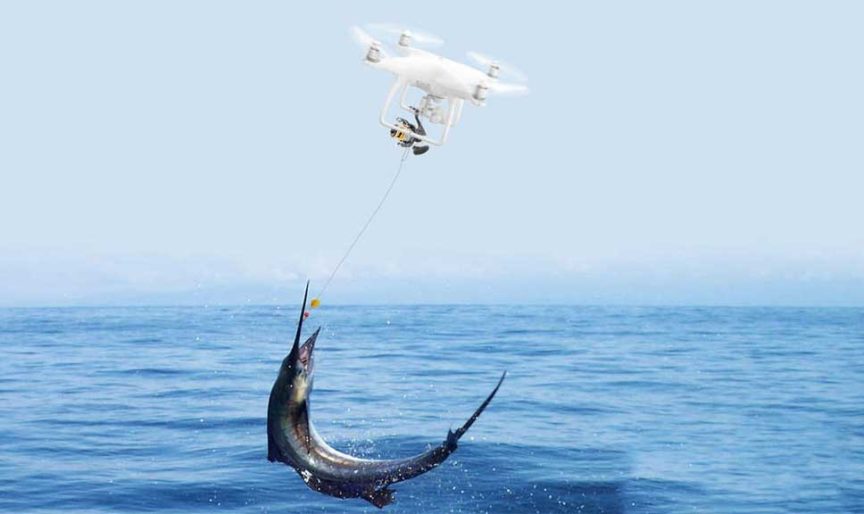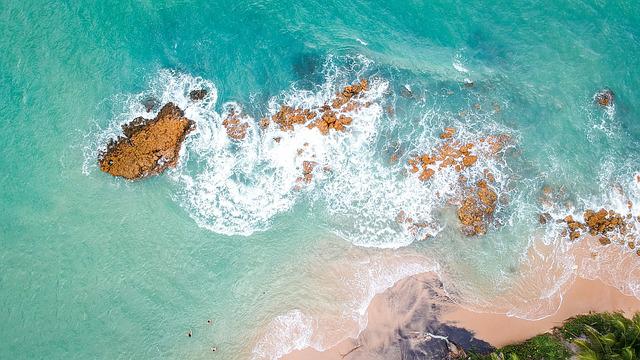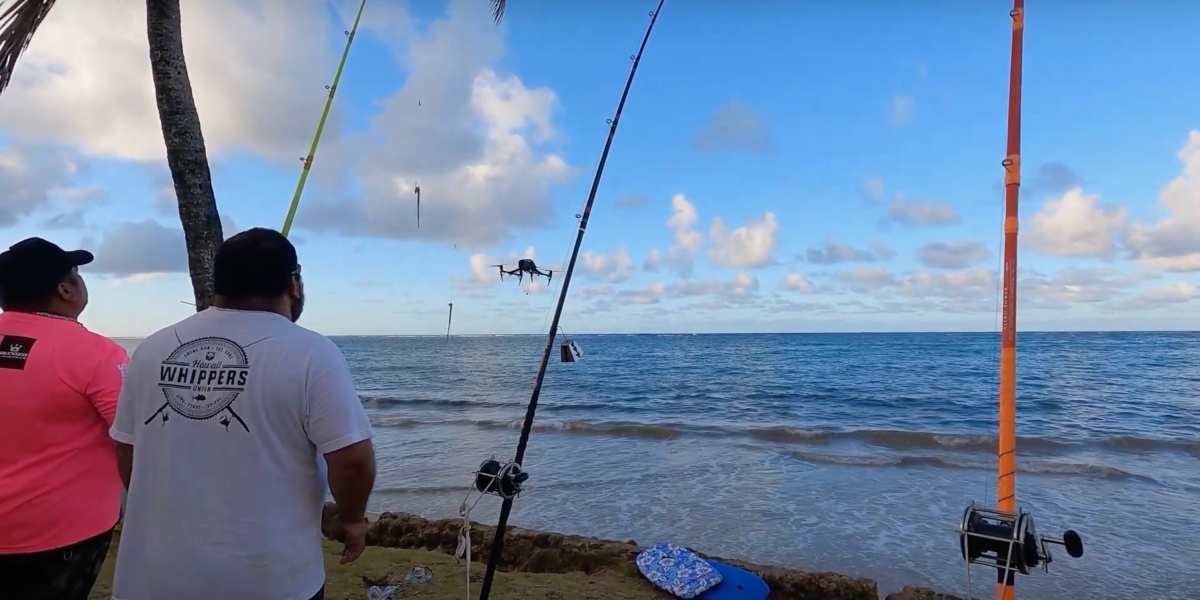
We will be looking at the basics and how to use a drone fishing rig. We'll also look at what to pay attention to when choosing your drone, battery life, and payload. Next, we will discuss how to get the best drone. For more tips and tricks, read on. You will soon be able to fly the drone of your dreams. Let's start!...and maybe catch a few fish!
Basic drone fishing rig
You will need a good set hooks to get started with drone fishing. You should double the fishing line and use mono or braid. You should tie a Uni knot or Cat's Paw Loop to it. You will also need a sinker (between two and eight ounces), and hooks to attach to every second section of the backbone. Finally, attach the lead loop of your snap swivel to your drone.
There are many ways you can create a fishing drone. An easy way to make a fishing drone is to attach a hook onto the drone's landing gear. Then spin the line until the line is released. You can also use a dropper or drop line to keep the fishing line down below the drone. The dropper lets you keep the main line down below the drone and not get tangled with the propellers. A dock and battery pack can also be added to the fishing drones.
After you have purchased the drone fishing rig you will need additional equipment. You will need a long fishing line (about 700 meters), as well as a bait-dropping device. These are optional but can make your drone fishing experience even more enjoyable. A good drone will give you a clearer view of your surroundings, and you'll be able to spot fish more easily.

Payload for drone fishing rig
If you're planning on catching a fish using a drone, you need to be aware of the safety measures that need to be taken. Avoid flying your drone in strong wind or rain. Here are some steps:
First, ensure that your drone is strong enough to carry your weight. The drone will not stay stable if it is loaded with heavy lures or braided lines. You should also be aware that the wind can cause the drone's drift if you fish at the coast. Also, it's important to verify local regulations and laws as some may prohibit you from fishing with a drone. If you decide to fish with your drone, make sure it has a good carrying capacity.
Next is to determine what accessories you will need to mount to your drone. A good rule of thumb is to use a rigging system that has a central attachment point to reduce weight distribution problems. The best attachment points for drones are motor struts, landing gear, or legs. It is important to avoid attaching any payload to the camera and gimbal because these can damage them. A simple solution is to tie a length of fishing line from one corner to the other. Tape can be used to keep it from falling apart.
Battery life for drone fishing rig
Be sure to check the batteries, and other gear before you go out fishing with your drone. This will allow you and your drone to have a longer battery life. You may be able to charge your drones using solar panels or batteries from your car. You should start with fully charged batteries. This will ensure that your drone can fly immediately after you arrive at your fishing spot.

A drone's flight times are another important consideration. Although some drones have longer flight times, others can fly for as little as twenty-two seconds. This is great for those who want to spend hours out on the water with their drone. However, a drone that is not able to sustain long distances will render it inoperable. This will make it almost impossible to catch fish.
After you have setup your fishing rig, attach the fishing line clip to either the legs or the motor struts. Then, attach the bait to the fishing line. Before you start to fly the drone, lock the reel and then unlock it when you are ready to drop the bait. As the drone drops the bait into the water, the tension will increase. It is important to charge your battery before each use or the drone may stop working properly.
FAQ
Is it necessary to have special training in order to fly a drone
No, you don’t need any special training in order to fly your drone. You will only need a remote control unit, and some knowledge about flight mechanics.
Does the FAA regulate drones?
The FAA oversees all aspects regarding drone operations, including safety standards and certification requirements.
Is it safe and legal to fly a drone when driving?
Flying a drone while driving is dangerous because you could crash into another vehicle or object. You may also run into pedestrians and other animals. Your car could be damaged if it hits power lines or trees.
What is the law about drones flying on private property?
New rules were recently published by the FAA regarding commercial drone flights. These rules do not apply to UAVs under 55 pounds or flying at less than 400 feet above sea level. Commercial operators must register at the FAA and apply for a license. Local authorities must also approve them if they are operating near airports or in other restricted areas.
What laws are there regarding drones flying?
In the United States, the Federal Aviation Administration (FAA) regulates all aspects of drone operations. You must first obtain a FAA certification before you can operate a drone commercially. Next, you will need to complete a course in flying skills and pass an exam. The final step is to pay the fee.
What US states have drones made legal?
Legally, you can operate a drone to perform hobby tasks. The Federal Aviation Administration (FAA), established guidelines that allow individuals to fly small unmanned aircraft systems. These UASs must first be registered with FAA to be allowed to be flown. If certain conditions are met the FAA will allow commercial operators to fly these drones.
Are drones allowed on public events?
If you observe the rules, then you can fly a drone wherever you want. If you intend to fly your drone at a public event, such as a parade or festival, you will need permission from the organizers.
Statistics
- According to Indeed, a drone pilot gets paid $25.73 per hour on average in the US. (dronesgator.com)
- Research and Markets predict a growth rate of 51.1% over the next five years. (thedroneu.com)
- According to industry research from ZipRecruiter , there are 10 cities where the typical salary for a Drone Pilot job is above the national average. (dronesgator.com)
External Links
How To
How To Fly Drones For Beginners
A drone is an unmanned aerial vehicle that can be remotely controlled and used for surveillance, aerial photography, film production, research, and other hobby purposes. The technology behind drones has been around since World War II. However, commercial use began in 2010 when DJI released their Phantom series of quadcopters. There have been many drones made since then. These range from beginner-friendly drones like Parrot AR Drone 2.0 to more advanced multi-rotor craft like DJI Mavic Pro.
There are many ways to fly a drone.
-
Remote control – This is when you attach a device to your hand that allows you to control the drone's flight path. There are two main types: Joysticks (like a radio), and On/Off switches (like an alarm clock).
-
Manual Control - Using a smartphone app, this method allows users to remotely operate the drone via GPS coordinates. The app will provide instructions and help you to locate the drone.
-
Autonomous Flight – This is when the drone handles all the piloting tasks. It's basically flying autonomously without any human intervention. The drone must be equipped with a camera and sensors that can capture images and data in order to fly autonomously.
-
Triggered Flight – This method is very similar to manual flight. The pilot creates a route that the drone will follow until it reaches the destination. After the program is complete, the drone automatically returns to the ground.
-
Landing Gear- Some drones include landing gear that allows for safe landing if the power goes out or they run out of batteries.
-
Goggles - Pilots may wear goggles to shield themselves from flying debris.
-
Camera - Certain drones come with cameras that allow you to take photos and videos from high above.
-
Obstacles-Some drones come with obstacle avoidance devices that keep them from hitting obstructions.
-
Speed – Some drones can reach speeds in excess of 40 mph.
-
Battery Life - Most drones can last between 20 minutes to 3 hours, depending on how much power you're using.
-
Distance - Some drones can travel up 30 miles depending on the model.
-
Power source - Not all drones can use an external power source. Others can run on internal batteries.
-
Weight - Some drones have a weight of less than 1 pound and others weigh 4 lbs.
-
Size - From small drones that can be carried in the palm of one's hand to larger drones that weigh over 50 pounds, drones come in a variety of sizes.
-
Price - From high-end models that cost thousands of dollars to low-cost options that start at $100, all drones fall under a certain price category.